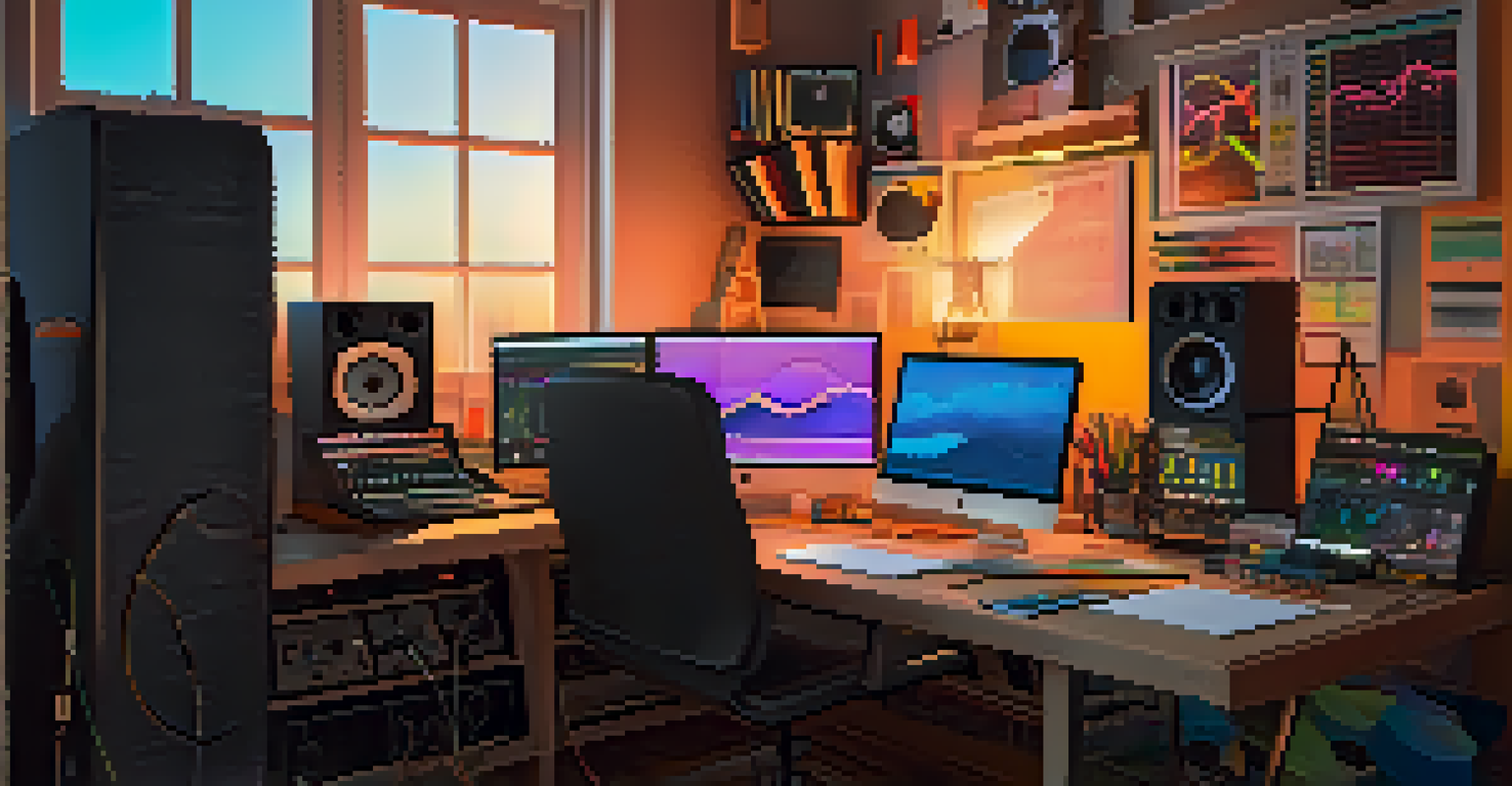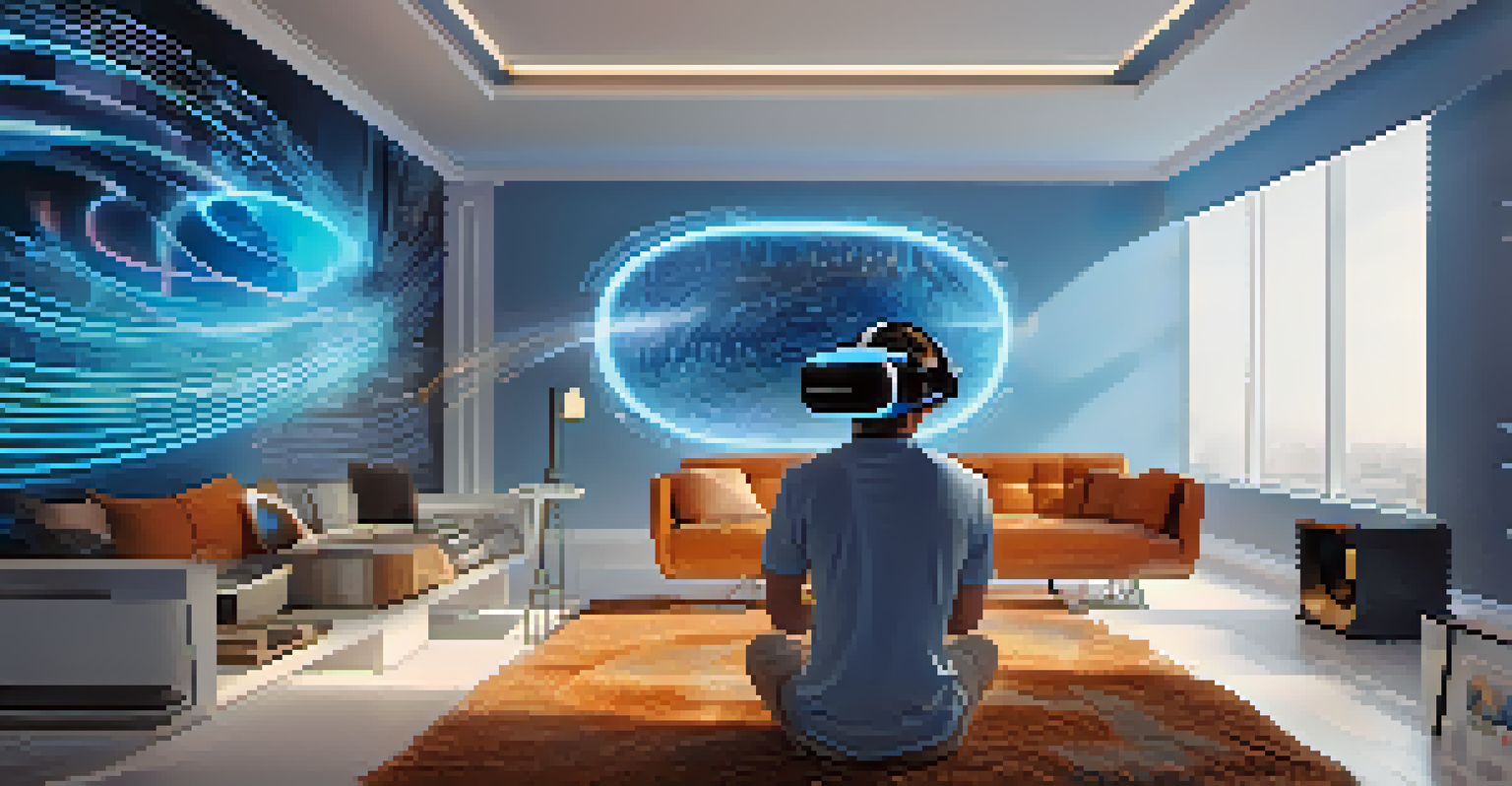The Art of Sound Design: Crafting Emotions Through Audio

Understanding Sound Design and Its Importance
Sound design is the art of creating audio elements that enhance storytelling. It's not just about background music; it includes sound effects, dialogue, and ambiance. Think of it as the invisible thread that weaves through a narrative, shaping how we feel about what we see.
Sound is the vocabulary of the soul.
In films, for example, the sound of footsteps can evoke suspense or comfort, depending on how it's used. Similarly, in video games, sound cues signal danger or achievement, guiding players through their experience. This interplay of audio and visuals makes sound design a vital component of effective storytelling.
Ultimately, sound design helps to create a more immersive experience, allowing audiences to connect emotionally. When done well, it can elevate a good story into a great one, leaving a lasting impression on the audience.
The Emotional Impact of Sound: A Psychological Perspective
Sound has a profound effect on our emotions, often more than we realize. Our brains process audio signals rapidly, linking them to memories and feelings. For instance, a haunting melody can bring about nostalgia, while a sudden loud noise can trigger fear.

This psychological connection is why sound designers carefully choose every element for a project. They understand that the right sound can amplify a scene's emotional weight, making viewers laugh, cry, or feel anxious. It's a powerful tool that taps into our subconscious.
Sound Design Enhances Storytelling
Sound design intricately weaves audio elements into narratives, elevating emotional engagement and immersion.
By manipulating elements like pitch, volume, and tempo, sound designers can guide audience reactions. This sophisticated orchestration of sound invites audiences to experience the story on a deeper level, fostering a more engaging connection with the narrative.
Elements of Sound Design: Breaking It Down
Sound design encompasses several key elements: dialogue, sound effects, ambient sound, and music. Dialogue is the backbone of storytelling, conveying character emotions and plot developments. It’s crucial that it feels natural and is mixed well with other elements.
The sound of a story is just as important as the words on the page.
Sound effects add realism and depth to a scene. Imagine the crackling of fire or the rustle of leaves—they transport the audience into the world of the story. Ambient sounds fill in the background, creating a sense of place and context, like the bustling noise of a city or the serene sounds of nature.
Finally, music ties everything together, evoking emotions that words often can’t express. Whether it's a sweeping score or subtle undertones, music can set the tone for an entire piece, making it an essential part of the sound design toolkit.
Tools of the Trade: Sound Design Software and Techniques
In the digital age, sound design has become more accessible thanks to advanced software. Programs like Pro Tools, Ableton Live, and Adobe Audition allow sound designers to manipulate audio with precision. These tools help in layering sounds, adjusting effects, and creating intricate soundscapes.
Techniques such as Foley—where live sound effects are recorded—add authenticity to a scene. This could involve creating footsteps or rustling clothing to match on-screen actions. It’s a labor-intensive process, but it brings a unique realism to the audio experience.
Psychological Impact of Sound
Sound profoundly influences emotions, with designers using audio cues to shape audience reactions and experiences.
Additionally, sound designers often incorporate field recordings, capturing sounds from the real world to enhance their projects. This blend of technology and creativity is what makes sound design a fascinating field and ensures that audio can be as compelling as visuals.
The Role of Sound Design in Different Media
Sound design plays a critical role across various media, including film, television, theater, and video games. Each medium has its unique requirements and challenges, but the goal remains the same: to enhance the narrative experience. In film, sound can dictate pacing and mood, while in video games, it often provides essential feedback to players.
In theater, live sound design can create a dynamic atmosphere, changing in real-time to match performances. The immediacy of live audio adds a layer of excitement and unpredictability that can be thrilling for audiences. This adaptability showcases the versatility of sound in storytelling.
Podcasts and audiobooks also rely heavily on sound design to engage listeners. With no visuals, sound must carry the entire narrative, making the art of sound design even more crucial in these formats. The right soundscapes can transport listeners into the story, making it an immersive auditory experience.
Case Studies: Iconic Sound Design Moments
Some of the most memorable moments in film and gaming are marked by exceptional sound design. For instance, in 'Star Wars,' the iconic sound of lightsabers and the hum of spaceships have become synonymous with the franchise. These sound effects are so well-crafted that they evoke a sense of nostalgia and excitement among fans.
Another example is the horror genre, where sound design is essential for building tension. In movies like 'A Quiet Place,' silence is as powerful as sound. The use of audio cues heightens the fear of the unknown, making the audience jump at the slightest noise.
Future of Sound Design in Tech
Emerging technologies like VR and AI are transforming sound design, offering new ways to create immersive auditory experiences.
In video games like 'The Legend of Zelda,' the music and sound effects are integral to gameplay. The familiar sound of collecting items or the theme music can trigger emotions and memories, creating a stronger bond between the player and the game world.
Future Trends in Sound Design: What to Expect
As technology continues to evolve, so does sound design. The rise of virtual reality (VR) and augmented reality (AR) presents new challenges and opportunities for sound designers. In these immersive environments, sound must be spatially accurate, enhancing the sense of presence and realism.
Additionally, advancements in artificial intelligence are beginning to influence how sound is created and manipulated. AI tools can analyze audio and suggest enhancements, allowing sound designers to focus more on the creative aspects of their work. This integration of technology can streamline the sound design process.

Finally, as the consumption of content shifts towards streaming and interactive experiences, sound design will play an increasingly vital role in engaging audiences. The future promises exciting developments that will continue to shape how we experience audio in storytelling.